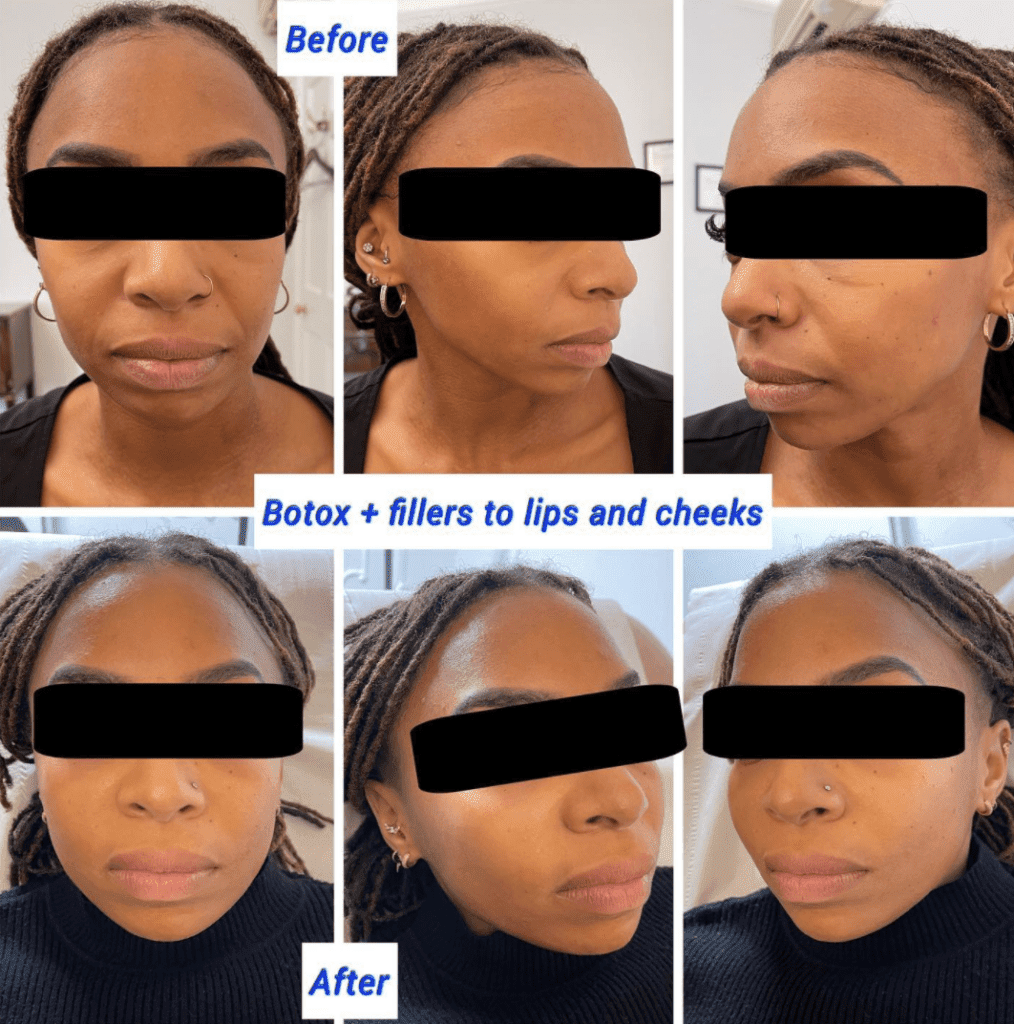Chances are you’ve heard of botulinum toxin. For years, plastic surgeons have successfully used botulinum toxin to combat signs of ageing and treat wrinkles and facial creases. If you’ve ever looked closely at your face, you may have noticed crow’s feet or those pesky wrinkles starting to form. You may even be considering Botulinum toxin. But what is it, and could it work for you? Let’s find out.
What is Botulinum Toxin?
Botulinum toxin is a toxin is produced by a bacterium called Clostridium botulinum. The word ‘toxin’ sounds scary, but it’s perfectly safe when administered by a qualified professional. In higher amounts, botulinum toxin can be dangerous. However, only weaker, small amounts are used in botulinum toxin treatments.
Injectables such as Botulinum toxin are a non-surgical way to improve your appearance. In the world of facial wrinkles and fine lines, Botulinum toxin is considered the gold standard. Treatments tend to be quick and use a small needle that feels like a pinprick. As long as your injector is fully qualified and well-trained, your face should still look natural and not frozen.
Currently, there are two types of Botulinum toxin available in the UK for commercial use:
- Botulinum toxin type A
- Botulinum toxin type B
Who is Botulinum Toxin Suitable For?
There is no rule as to what age one should get Botulinum toxin since we all age differently. However, the best time to get the treatment is when you start noticing fine lines and reduced facial volume. Botulinum toxin can help smooth out facial wrinkles and fine lines before they get too deep. Most people who opt for Botulinum toxin treatment do it to alleviate wrinkles and lines on the face. Botulinum toxin offers several advantages, including:
- It is safe, fast-working and effective.
- The results are visible immediately, although you can see the best results after a week.
- There is no downtime, and you can return to normal activities immediately after leaving the doctor’s office.
- If there are any side effects, they are mostly mild. Any swelling, bruising, and redness will disappear after a few days.
- Botulinum toxin can be combined with other anti-ageing cosmetic treatments like dermal fillers.
- The treatment can be preventive since it stops muscle movement, ensuring that deep lines don’t form for a long time.
Botulinum toxin is also prescribed to treat several medical conditions like chronic headaches and migraines, lazy eye, excessive sweating and an overreactive bladder. The important part of Botulinum toxin treatment is choosing an experienced practitioner. Botched Botulinum toxin is a reality and results from an inexperienced injector that can result in a “frozen” appearance or drooping eyelids.

How Does Botulinum Toxin Work?
During a botulinum toxin treatment, a professional injects a small and controlled dose in specific areas of your choice. The botulinum toxin mechanism of action involves blocking certain nerve signals that make muscles contract. It temporarily paralyses and relaxes muscles, softening unwanted wrinkles and fine lines. So, after the injection, the muscle can’t contract. This relaxing effect can last up to six months, so you will have to book top-up appointments to maintain your look. The result of the botulinum toxin remains local and doesn’t roam through your body.
After your initial consultation for your treatment, getting botulinum toxin takes only minutes. With the first injection, it takes time to act. You may be panicking that it does not have the desired effect but give it some time to kick into action. You should see results around 7 or 8 days after your first injection. At about 14 days, the results should be fully visible.
Although you often think of botulinum toxin as a way to turn back the clock, many younger patients use botulinum toxin as a way to delay lines and wrinkles forming. This is useful if you have concerns about signs of ageing developing later in life. Reducing the appearance of facial wrinkles is one of the most common treatments for botulinum toxin. Other areas for botulinum toxin treatments include:
- Frown lines
- Crow’s feet
- Forehead creases
- Downturned smile
Botulinum Toxin Aftercare
Low maintenance is the best thing about Botulinum toxin and other non-cosmetic procedures like dermal fillers. There is also little to no downtime, and you can return to normal activities immediately after the treatment. However, there are a few things your doctor will ask you to avoid:
- Rubbing your face
- Wearing makeup as this can lead to infections
- Heavy exercise until after the botulinum toxin injections have settled
- Covering your face with a hat as you might irritate the injection site
- Using blood thinning medications like ibuprofen
At least avoid these things for the first 24 hours after the procedure to minimise bruising and improve the treatment effectiveness. Usually, the treatment lasts about 2 to 6 months before you need another one. That’s the main downside of botulinum toxin injections, needing repeat treatments to maintain results.
What Are the Potential Side Effects of Botulinum Toxin?
In general, the risks associated with botulinum toxin are relatively minor. But like any medical or cosmetic treatment, things can go wrong. For most people, side effects tend to be minor and restricted to the injection site. Side effects can include symptoms such as pain, swelling, and bruising.
In severe but rare cases, breathing and swallowing problems can occur. Some people also develop allergic reactions to botulinum toxin, persistent headaches and dark circles at the injection site. This is why it’s essential to visit a qualified and accredited professional who can administer the botulinum toxin safely.
As always, speak to a plastic surgeon before committing to any cosmetic treatment. Long-term, avoid practices that might exacerbate wrinkles or poor skin health. If you opt for botulinum toxin treatment, avoid smoking, reduce excessive drinking and ensure you don’t expose yourself to the sun for long.
Considering Botulinum Toxin? Contact A Specialist at The Harley Clinic
While Botulinum toxin is a common procedure, it’s essential that you have it done by a qualified plastic surgeon. Dr. Riaz Agha is an expert in both cosmetic surgery and non-surgical cosmetic procedures.
If you desire a natural, youthful look, book a consultation today at our Harley Street Clinic.














I gotta favorite this internet site it seems handy . Farra Rog Moonier